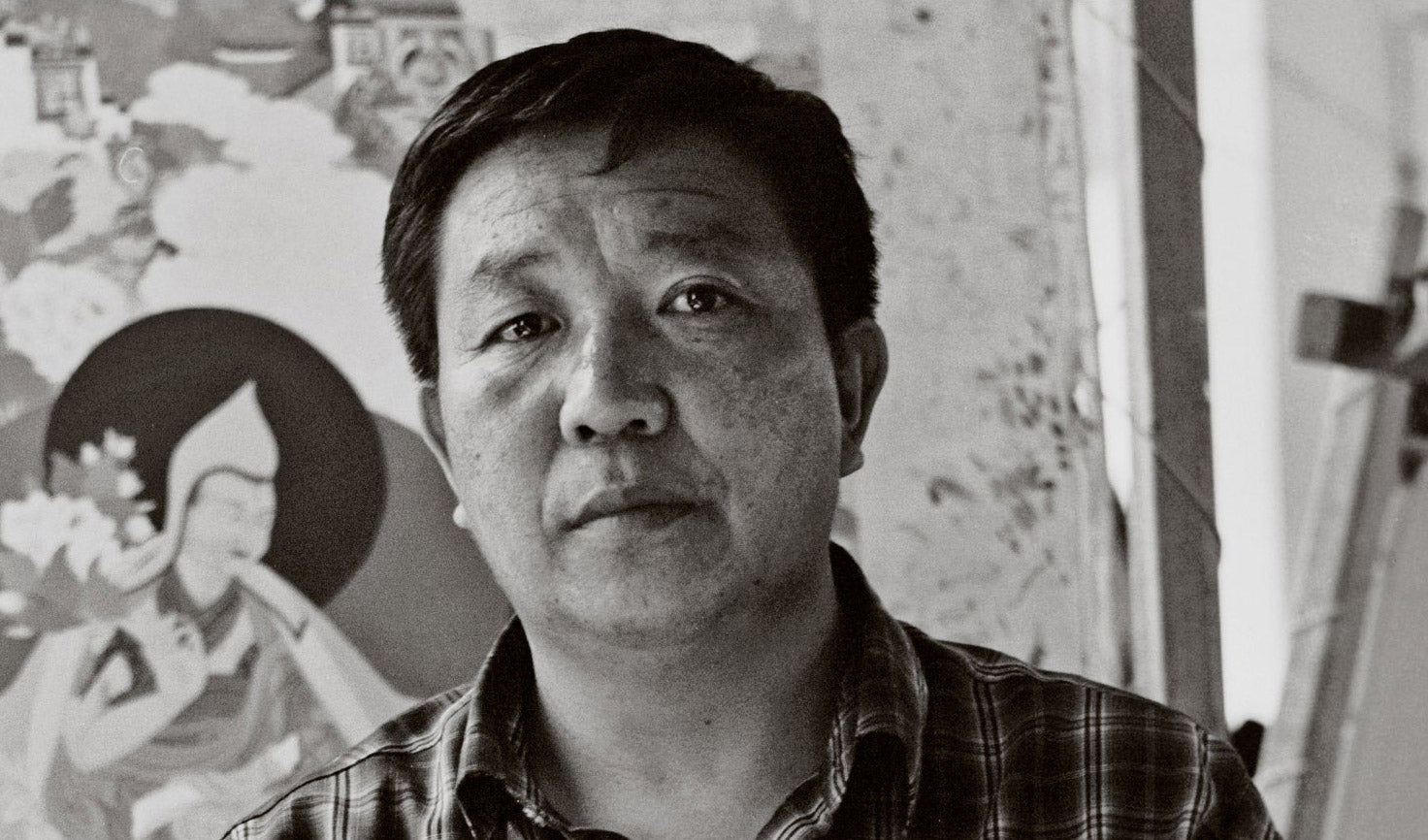
Master Woodcarver
Choe Phuntsok (1923-2005)
Choe Phuntsok was born in Ngamring, Tibet in the year 1923. He spent his early years on his family farm and then at the age of fifteen began training as a carpenter, learning the traditional post and beam construction of buildings. Three years later, he moved into the Panchen Lama’s Monastery, Tashi Lhunpo in Shigatse, where he trained for three more years in the fine art of woodcarving, creating flowers and other decorative designs. Choe Phuntsok then began to work independently. As his reputation spread, he was called on to lead teams of thirty or more in building monasteries and crafting the wooden thrones and altars inside them.
In 1960, Choe Phuntsok, along with many others from his area, left Tibet for Nepal. He worked there for almost 20 years, helping Tibetan refugees construct homes and buildings, and especially, building a monastery for Tulsi Rinpoche. In 1979, Choe Phuntsok was invited by the Tibetan Government-in-Exile to come to Dharamsala to train a new generation of Tibetan artists. Since building wooden structures was no longer an option in India where wood is scarce, he concentrated on wood carving and traditional Tibetan furniture. In 1994, he was invited to join Norbulingka Institute with his trainees. Choe Phuntsok and his deep knowledge of Tibetan design and furniture building along with his team of apprentices were a great addition to Norbulingka. We were glad to now add traditional carpentry and woodcarving to the crafts we were able to preserve.
In the early 90’s the most difficult years of exile were now behind the Tibetan community and they were once more able to patronize the making of traditional monastic and household furniture. Newly built monasteries commissioned elaborate thrones and altars, allowing Choe Phuntsok and his team to put their skills on their finest display. Choe Phuntsok’s workshop became a beehive of activity, with many demands for new recruits. Norbulingka’s aim was to train young people in need of jobs and upon completion, either offer them employment at Norbulingka or provide them with the skills necessary to set up their own workshops. The apprentices were trained just as they were in Tibet, first building their own tools, then learning the traditional designs they would later apply to their carvings.
Aside from working on the Norbulingka collections, he and his team have completed work on many commissions, including eight grand thrones, whose intricate detail and beauty is meant to honor the Dharma. From thrones created at Norbulingka, His Holiness the Dalai Lama and other eminent teachers have delivered a myriad of teachings, keeping the religious heart of Tibetan culture alive.
In 2005, Choe Phuntsok retired from Norbulingka and returned to Nepal where he peacefully passed away in the monastery he built for Tulsi Rinpoche. His legacy lives on in the beautiful carvings still made at Norbulingka today.














